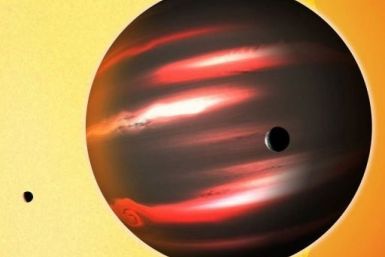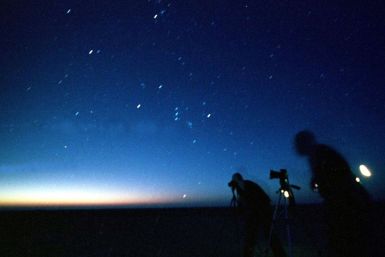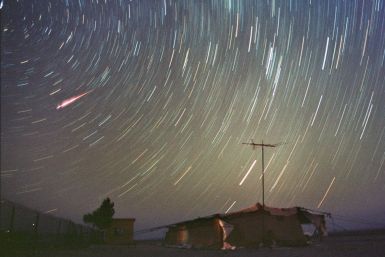Tests performed on a moon rock sample have led an international team of scientists to suggest that Earth's moon is either 200 million years younger than widely believed or it has evolved differently over time.
New techniques to study rocks have led researchers to believe that the Earth's moon is actually much younger than previously predicted.
The moon may be younger than first thought, as new techniques have emerged that date moon rocks to a much more recent time.
According to a new analysis of lunar rocks, the Moon may turn out to be 4.36 billion years old, up to 200 million years younger than previously thought.
Researchers at UCLA have explained why Saturn's largest moon, Titan, has what looks like an enormous white arrow about the size of Texas on its surface.
Saturn's largest moon, Titan, has what looks like an enormous white arrow about the size of Texas on its surface, and scientists at UCLA believe they have solved its mystery.
It's time to get ready for another interplanetary object encounter as NASA has confirmed that a very dark, nearly globular asteroid will pass between Earth and the moon later this year.
The gigantic white cloud that appears on Titan's surface may be the result of planetary-scale atmospheric waves, scientists say.
The annual Perseid meteor shower was observed around the world by the sky-watchers on Friday night and Saturday morning despite the full moon light, which is called 'Grain Moon' or 'Green Corn Moon' for this month.
Despite a bright full moon, sky-watchers around the world didn't get disappointed as they caught striking views of the Perseid meteor shower overnight Friday (Aug. 12).
Orion spaceship is being prepared for a new round of tests at a Lockheed Martin facility near Denver
With its most spectacular peak expected late Friday and Saturday, meteor-watchers are out and about, or even watching in the comfort of their homes online via NASA's live stream. But this year's Perseid meteor shower is timed simultaneously with Earth's full moon, which is expected to hit maximum luminosity and reduce the number of visible meteors.
Astronomers have discovered the darkest known exoplanet, which is a distant, Jupiter-sized gas giant called TrES-2b, in our home galaxy, with NASA's Kepler space telescope.
The Perseid meteor shower is an annual meteor shower timed to happen just about now, and expected to peak late Friday and Saturday. However, it will occur just as the full moon hits maximum luminosity. With the bright moonlight in mind, meteor-watchers will improve chances when viewing after the moon sets and before twilight.
Critics of bloody violence and excessive sex on TV have long had HBO's vampire drama "True Blood" in their cross hairs, but now the popular series has another group of wary citizens -- witches, real ones.
Full moon may interfere with the spectacle
Stargazers who are looking forward to a breathtaking view of the Perseid Meteor Shower in the celestial sky may end up disappointed if the sky turns cloudy even as a full moon threatens to wash out the event by illuminating the night sky this weekend.
As the sun sets tonight, get set to gaze at a battle in the sky between the most popular sky shows Perseid meteor shower and the big, full moon to showcase who is the best.
The annual Perseid meteor shower is round the corner, but conditions are sub-optimal this year: sky gazers will not be able to watch meteors falling through night sky in abundance as the celestial display is predicted to be hampered by the full moon.
The full moon may interfere with the annual Perseid meteor shower, the most reliable meteor shower of the year this week. The shower will peak overnight Aug. 12 and Aug. 13 just before the full moon reaches its potential brightness.
As the Perseid Meteor Shower approaches its peak time in the overnight hours of Friday and Saturday, the full moon is expected to thwart skywatchers from enjoying the best beauty of the beloved shooting stars.
The annual Perseid meteor shower, which is caused by debris from Comet Swift-Tuttle and observed for about 2000 years, will be hampered this year by the full moon, which happens when Earth comes between the Sun and the Moon.
































